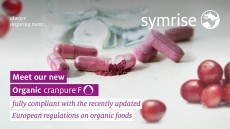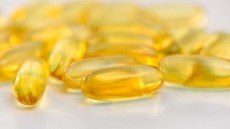Mechanism of grape juice's cholesterol benefits proposed
grape juice polyphenols help reduce bad cholesterol levels, science
that could extend understanding of a product that is enjoying
increasing consumer awareness.
Grape juice is a rich source of polyphenols, potent antioxidants that 'mop up' harmful reactive oxygen species that have been identified as key to the ageing process. Previous research has linked polyphenols, such as catechins, epicatechins, and anthocyanins to protecting against various cancers and heart disease.
A strong body of science has reported that grape juice can reduce the oxidation of LDL (bad) cholesterol. This has led to some products like Welch's purple grape juice in the UK, being approved by the heart health charity Heart UK to carry its logo on packaging.
Yet the underlying mechanism of the active compounds in the grape juice has not been fully identified, say the Spanish scientists.
The researchers, from the CSIC and the University of Alcala, performed an in vitro study of red grape polyphenols in human cells, and found that the polyphenols were disrupted by the LDL-cholesterol transport in the pathway that sees molecules absorbed by cells.
Red grape concentrate was incubated with human liver cells in the presence or absence of LDL-cholesterol. In the presence of LDL it was observed that the grape concentrate increased the activity and cell surface expression of the LDL receptor. The sterol regulating element-binding protein-1 was also increased in the presence of both LDL and the grape extract.
These processes also result in less free cholesterol reaching the endoplasmic reticulum (ER), an organelle found in eukaryotic cells.
"Taken together, these results suggest that red grape juice compromises the availability of LDL-derived free cholesterol in the ER, thus explaining the counteracting effect of red grape juice in the response of ER," wrote lead author Alberto Dávalos.
The researchers also noticed that gene expression was affected by the grape juice, suggesting that the polyphenols could have implications for nutrigenomics.
One limitation with the study is that the researchers could not identify which polyphenol(s) were the active species in the process.
"The variety of polyphenols present in the red grape juice concentrate, including flavonols, anthocyanins, flavan-3-ols, procyanidins and phenolics acids, and the limited amount of pure compounds, make the search for the active compound(s) a complex task," explained Dávalos.
Other antioxidants did not mimic the effect suggesting that the antioxidant activity of the polyphenols was not responsible for the effect on the LDL receptors.
High cholesterol levels, hypercholesterolaemia, have a long association with many diseases, particularly cardiovascular disease (CVD), the cause of almost 50 per cent of deaths in Europe, and reported to cost the EU economy an estimated €169bn ($202bn) per year.











